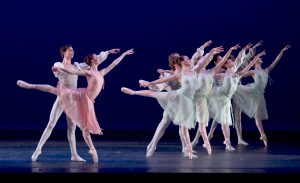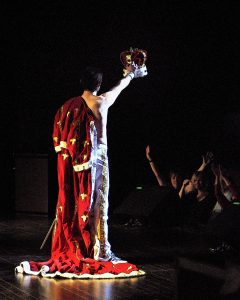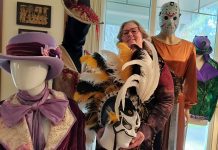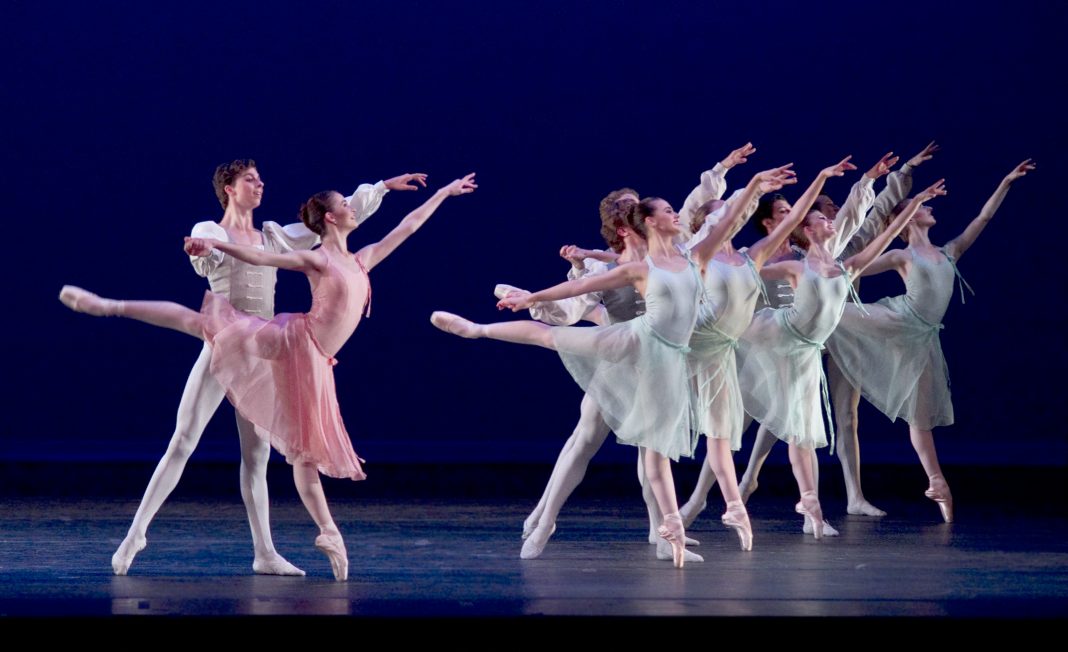Seeing a live theater performance at Mount Baker Theatre (MBT) can be a once-in-a-lifetime event. One of the best parts for both audience and performers is the crackling energy and intense feelings that flow back and forth between the stage and crowd. But not everyone is an experienced theater-goer. For many of us, it’s a very special occasion. Others have never attended before. We’re not exactly sure how to dress, what the proper etiquette might be or even what to expect.

What is considered acceptable or preferred behavior during a show has shifted over the last few years. Where once anything but silence throughout a performance would have been considered rude, now some performers welcome the audience to use their phones to photograph, check-in and even tweet their attendance during the performance.
But when can you stand up and dance to the music? What should you be looking for when watching a concert, Broadway musical or dance performance? To help you navigate the shifting etiquette and have the best chance of connecting with the performance in a positive way, MBT has put together this little viewer’s guide.
What to Wear
As a viewer of a live performance, everyone can do their part to ensure that everyone has access to an enjoyable experience. Different performers and different types of shows have differing expectations. In general, the west coast—and Bellingham—are pretty relaxed about dress code. MBT was originally designed as an opulent movie palace and they’ve done their best to preserve her beauty so you won’t feel out of place if you choose to dress up to celebrate your visit. But, of course, they’d rather have you attend in blue jeans than not attend at all. Whatever you choose to wear, make sure you’ll be comfortable and not distracted so you’ll be able to focus on enjoying the performance.
General Cell Phone Etiquette
Often, an artist or emcee will describe their expectations for the audience, so listen carefully to the introduction for clues. It’s important to respect the performers’ feelings about cell phone use. Some ask that phones are off and away while others encourage their use. When in doubt, err on the side of caution, leaving the phone for after the show. In 2015, Tony-award-winning actress Patti LuPone took a phone from an audience member who had been texting during the first act of her play. Even silent texting can be disruptive because the glow of the screen can be distracting to surrounding patrons.
Punctuality

Although it is acceptable in many circles to be ‘fashionably late’ to a party, that is often not the case for live theater. Plan to arrive early for a performance. The box office and theatre often opens at least 30 minutes before the show begins. Concessions are open for your convenience and you’ll have plenty of time to find your seats and use the restroom before the performance. That’s particularly important for shows without an intermission. Late seating once the performance has begun is at the discretion of the ushers only and they wouldn’t want you to miss out on the performance or disrupt the experience of others.
Little Ones
MBT encourages families to attend together when the show’s content is appropriate. Live theater can affect a child’s life and outlook on the world in so many unpredictable ways. MBT’s Education program has developed a detailed Theatre Etiquette Guide for their education program shows to help teachers, families and children have a positive theater experience. These tips can be generalized to any show and can apply to adults as well.
Because every show is a little different here are a few specifics based on the type of show you’re attending.
Ballet and Other Dance Performance
Dance has a long history in theater. As such, it has held onto traditions. That includes the expectation of a quiet and attentive audience. Dancers work for decades to perfect their performance. Their goal is to transport their audience to another place and time—to glide and even appear to fly with ease and grace. They want you to forget who and where you are and join them in their story. But the truth is, they work hard to make it look effortless.

To best enjoy a dance performance, pay close attention to the details. When watching the Houston Ballet: Season Tour on April 1, it’s easy to notice that the costumes are chosen with care. They allow ease of movement, define the character and allow the audience to appreciate each subtle movement of the performers’ body, from the tip of their pointed toe to the position of their arms in relation to their perfect posture. For more details on how to best appreciate the beauty of dance, check out this guide for non-dancers.
The Diversity of Concerts
As a general rule, the type of music being performed will likely dictate how much audience participation is intended. As you might expect, many concert performers invite audiences to leave their seats and move forward to get up and dance in the aisles. If you’re planning to attend a performance like the upcoming One Night of Queen Performed by Gary Mullen & the Works, be sure to wear your dancing shoes. You should expect that patrons in seats closer to the stage might stand and dance to the music while those further from the stage might remain seated.
Be sure to notice the effort a band or group has invested in their multi-media and stage lighting, choreography and costumes. Often they are considered important components of a live performance.
For other shows, like International Guitar Night on February 24, featuring solos, duets and quartets of diverse world acoustic guitar, audiences will appreciate being able to hear every nuance the artists are able to pull from their instruments. Simple set design and costumes invite you to focus all of your attention on the technique behind the art form. These shows make you want to hold your breath in witness of the masterful artistry on stage.
The Spectacle of Musical Theatre

With a few exceptions, this genre is often energetic and full of action. The performers can feel the audiences’ reaction. You’ll be too enthralled to talk to your neighbor during a musical theater performance (and it is frowned upon). Generally laughter, applause and occasional clapping along to the music are highly encouraged. To fully enjoy musical theater, be sure to notice the variety and effort invested in costuming and the ingenious ways sets are moved and changed from scene to scene. Both the costumes and sets will add to the spectacle of Broadway’s The Pirates of Penzance on the MBT stage March 12. You’ll enjoy getting sucked into their adventure by the New York Gilbert and Sullivan Players.
Of course, every show has its own feel specific to the performers. When in doubt, you usually can’t lose if you observe and copy the behavior of those around you. Being respectful and considerate of others is always a safe bet. When you’re not sure, please ask one of the very experienced volunteer ushers who’ve been through training and make it their mission to ensure everyone gets the most from their theater-going experience.
Mount Baker Theatre
104 North Commercial Street
Bellingham, WA 98225
Phone: 360-733-5793
Tickets: 360-734-6080
www.mountbakertheatre.com







































